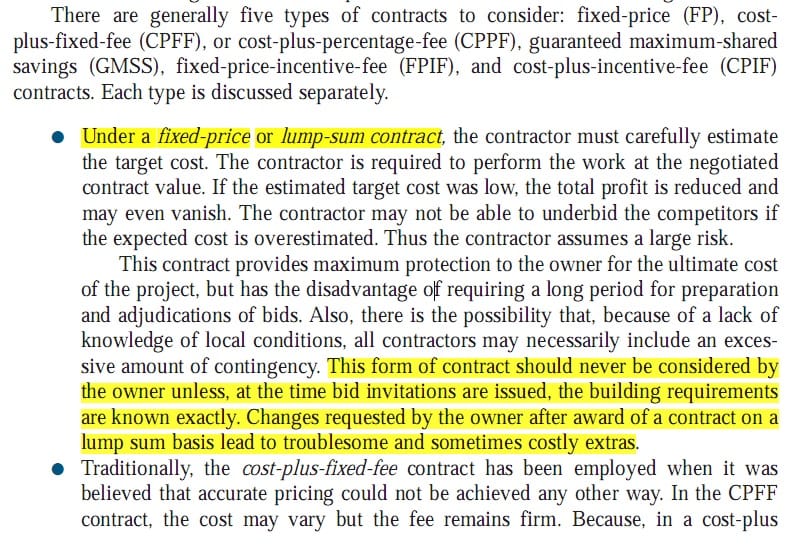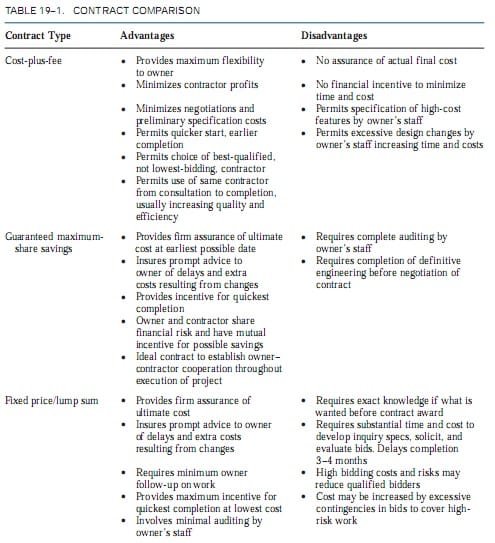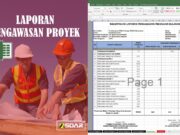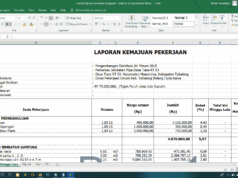 asdar.id menyediakan Member Premium Download untuk download file tanpa embel-embel iklan dan halaman, apa lagi harus menunggu timer yang begitu lama. Dengan berlangganan Member Premium Download, semua file dapat didownload dengan singkat langsung menuju ke sumbernya!, klik DISINI untuk DAFTAR atau DISINI untuk LOGIN :-) Jika ada pertanyaan silahkan hubungi Admin DISINI. Untuk cara download file Member Free Download, bisa membaca Tutorial Download yang ada dibawah Timer (halaman Safelink) saat menekan tombol download.
asdar.id menyediakan Member Premium Download untuk download file tanpa embel-embel iklan dan halaman, apa lagi harus menunggu timer yang begitu lama. Dengan berlangganan Member Premium Download, semua file dapat didownload dengan singkat langsung menuju ke sumbernya!, klik DISINI untuk DAFTAR atau DISINI untuk LOGIN :-) Jika ada pertanyaan silahkan hubungi Admin DISINI. Untuk cara download file Member Free Download, bisa membaca Tutorial Download yang ada dibawah Timer (halaman Safelink) saat menekan tombol download.Saya tergelitik untuk mencoba menuangkan pengalaman mengerjakan proyek dengan kontrak lump sum. Judul di atas adalah salah satu pertanyaan orang mengenai kontrak lump sum yang pernah saya hadapi. Jadi jangan anggap judul di atas adalah hal yang benar walaupun ini benar-benar fakta. Saya sertakan semua pendapat dan kejadian tentang kontrak lump sum yang saya temui dalam tulisan ini. Bukan benar atau salah, ini hanya memberi sumber informasi saja. Saya lampirkan juga beberapa referensi tentang kontrak lump sum agar ada komparasi antara pemahaman saat ini dan berdasarkan referensi.
Saya ungkap dulu pendapat beberapa orang dan juga kejadian tentang kontrak lump sum yang pernah saya temui dalam daftar berikut ini:
- Kontrak lump sum itu hanya boleh ada pekerjaan kurang dan tidak boleh ada pekerjaan tambah.
- Kontrak lump sum itu segala risiko pekerjaan ditanggung kontraktor. Walaupun ada perubahan desain oleh owner yang menyebabkan penambahan biaya.
- Kontrak lump sum itu cocok untuk pekerjaan gedung, tidak cocok untuk pekerjaan konstruksi selain gedung. Ada juga yang bilang kalau untuk gedung, bangunan atas dibuat lump sum dan struktur bawah dibuat unit price.
- Pada lelang proyek pemerintah dengan kontrak lump sum, panitia memberikan BQ kosong yang harus sama volumenya oleh Penawar. Panitia juga melakukan koreksi aritmatik, bahkan jika lelang dilakukan dengan cara online (e-proc).
- Pada pelaksanaan proyek pemerintah, audit pemeriksa dilakukan dengan mencocokkan BQ dengan pelaksanaan di lapangan.
- Kontrak lump sum tidak ada eskalasi harga pada sebagian proyek pemerintah, walau kontrak adalah multi years.
- Ada proyek pemerintah yang dalam pelaksanaan berubah jenis kontraknya yang semula lump sum menjadi unit price karena beberapa item pekerjaan volume lebih banyak dari pelaksanaan.
- Pada proyek pemerintah, umumnya pekerjaan tambah-kurang dihitung secara unit price walaupun kontraknya lump sum.
- Nilai pekerjaan tambah suatu item pekerjaan tidak boleh lebih besar dari 10% Nilai Kontrak dengan alasan kontrak lump sum. Jadi max 10% walaupun volume terhitung menunjukkan nilai pekerjaan tambah lebih dari 10%.
- Umumnya pada proyek swasta, volume penawaran kontraktor boleh beda tapi diklarifikasi dan dicek atau dihitung bersama perbedaannya (terutama yang lebih besar).
- Pada salah satu proyek swasta setelah negosiasi, pernah dilakukan penyesuaian nilai kontrak gara-gara volume salah satu item pekerjaan berlebih. Jadi nilai kontrak dikurangi.
- Pada salah satu proyek internasional di Jakarta dengan kontrak lump sum, penambahan biaya akibat penyesuaian desain pondasi karena kondisi tanah banyak sisa pondasi existing tidak diakui. Dimana dalam proses lelang informasi mengenai kondisi tanah tersebut tidak disampaikan.
- Jika ada pekerjaan tambah dengan item pekerjaan yang sama (contoh bekisting) namun bekisting pada pekerjaan tambah harus dikerjakan dengan metode yang berbeda, maka harganya harus sama dengan harga pada kontrak awal.
- Jika kontraktor dalam pelaksanaannya merubah metode pelaksanaan agar lebih efisien maka harga direview. Contoh perubahan penggunaan alat yang semula menggunakan Tower Crane menjadi Mobile Crane.
- Setelah pekerjaan selesai, dilakukan perhitungan final mengenai volume riel pekerjaan, walaupun kontrak adalah lump sum (Proyek pemerintah dan swasta).
- Jika ada perbedaan gambar antara gambar denah dan detail maka dipakai yang biayanya lebih tinggi. Begitu pula jika terjadi perbedaan antara gambar dan spesifikasi, maka yang digunakan adalah yang harganya lebih tinggi.
- Jika ada item pekerjaan yang tidak terdapat di dokumen manapun tapi harus ada karena untuk melengkapi sistem, maka pekerjaan itu harus dikerjakan tanpa penambahan biaya.
- Dan masih banyak lagi variasi pendapat dan kondisi yang terjadi.
Sekali lagi bukan benar atau salah. Saya hanya memetakan pendapat dan kondisi yang ada. Saya yakin sebagian pembaca yang berkecimpung dalam dunia proyek konstruksi mungkin pernah mengalami satu atau sebagian pendapat dan kondisi di atas, pembaca silahkan menilai karena kita bebas berpendapat. Tujuan saya hanya ingin jika ada yang salah, mari kita coba sama-sama benahi sesuai kapasitas dan posisi kita masing-masing.
Supaya ada gambaran yang lebih baik mengenai konsep kontrak lump sum, saya coba memberikan beberapa referensi yang ada, dan disimpulkan sebagai berikut:
- Fixed-price or lump-sum contracts. This category of contract involves a fixed total price for a well-defined product. Fixed-price contracts can also include incentives for meeting or exceeding selected project objectives, such as schedule targets. The simplest form of a fixed-price contract is a purchase order for a specified item to be delivered by a specified date for a specified price. (PMBOK 3rd Edition).
- Written agreement under which a principal (customer or owner) agrees to pay a contractor a specified amount, for completing a scope of work (involving a variety of unspecified items of work) without requiring a cost breakdown (www.businessdictionary.com/definition/lump-sum-contract.html).
- The term firm fixed price or lump sum contract refers specifically to a type or variety of fixed price contract where the buyer or purchaser pays the seller or provider a fixed total amount for a very well-defined product, however there is the allowance within these for a variance in the event there are incentives attained through project incentives achieved or targets met. There are benefits of this type of contract to both the buyer and the seller, and these are similar to those for the fixed price incentive fee contract. To the seller, it is beneficial because it typically allows for the seller or provider to charge a reasonable base fee, yet also allows for exceptional performance to be rewarded further. However, for the buyer that also provides a very tangible benefit. The buyer typically will be paying a very reasonable base fee up front, but there is of course the chance that the price will go up in the future if certain conditions are met. This term is defined in the 3rd edition of the PMBOK but not in the 4th. (www.project-management-knowledge.com).
- Lump Sum Typically used with Design-Bid-Build method of project procurement. A lump sum contract, sometimes called stipulated sum, is the most basic form of agreement between a supplier of services and a customer. The supplier agrees to provide specified services for a specific price. The receiver agrees to pay the price upon completion of the work or according to a negotiated payment schedule. In developing a lump sum bid, the builder will estimate the costs of labor and materials and add to it a standard amount for overhead and the desired amount of profit. Most builders will estimate profit and overhead to total about 12-16 percent of the project cost. This amount may be increased based on the builder’s assessment of risk. If the actual costs of labor and materials are higher than the builder’s estimate, the profit will be reduced. If the actual costs are lower, the builder gets more profit. Either way, the cost to the owner is the same. In practice, however, costs that exceed the estimates may lead to disputes over the scope of work or attempts to substitute less expensive materials for those specified. The Stipulated Sum contract may contain a section that stipulates certain unit price items. Unit Price is often used for those items that have indefinite quantities, such as pier depth. A fixed price is established for each unit of work. Contractor free to use any means and methods to complete work. Contractor responsible for proper work performance. Work must be very well defined at bid time. Fully developed plans and specifications required. Owner’s financial risk low and fixed at outset. Contractor has greater ability for profit. Requirements (Good project definition, Stable project conditions, Effective competition essential when bidding, Much longer time to bid and award this type of project, Minimum scope changes due to higher mark-ups than occurred at bidding. Advantages (Low financial risk to Owner, High financial risk to Contractor, Know cost at outset, Minimum Owner supervision related to quality and schedule, Contractor should assign best personnel due to maximum financial motivation to achieve early completion and superior performance, Contractor selection is relatively easy. Disadvantages (Changes difficult and costly, Early project start not possible due to need to complete design prior to bidding, Contractor free to choose lowest cost means, methods, and materials consistent with the specifications. Only minimum specifications will be provided, Hard to build relationship. Each project is unique, Bidding expensive and lengthy, Contractor may include high contingency within each Schedule of Value item.
- With this kind of contract the engineer and/or contractor agrees to do the a described and specified project for a fixed price. Also named “Fixed Fee Contract”. Often used in engineering contracts.( www.engineeringtoolbox.com/contract-types-d_925.html )
- Lump Sum/Fixed Price Contracts. In this type of contract, the Contractor is generally free to employ whatever methods and resources it chooses in order to complete the work. The Contractor carries total responsibility for proper performance of the work although approval of design, drawings, and the placement of purchase orders and subcontracts can be monitored by the Owner to ensure compliance with the specification. The work to be performed must be closely defined. Since the contractor will not carry out any work not contained in the specification without requiring additional payment, a fully developed specification is vitally important. The work has to be performed within a specified period of time, and status/progress can be monitored by the Owner to ensure that completion meets the contractual requirements. The lump sum/fixed price contract presents a low financial risk to the Owner, and the required investment level can be established at an early date. This type of contract allows a higher return to the Contractor for superior performance. A good design definition is essential, although this may be time-consuming. Further, the bidding time can be twice as long as that for a reimbursable contract bid. For Contractors, the cost of bids and the high financial risk are factors in determining the lump sum approach. (www.projectmanagement.20m.com/custom4.html).
- Lump Sum Contract: Jenis kontrak dimana Kontraktor setuju untuk melaksanakan semua scope of work yang ditawarkan sesuai dengan persyaratan yang disepakati (gambar konstruksi, spesifikasi,schedules,dan semua persyaratan dalam dokumen lainnya) dengan risiko sepenuhnya ditanggung oleh Kontraktor. (Asiyanto, 2004).
- Kontrak lump sum adalah jenis kontrak kerja konstruksi atas penyelesaian seluruh pekerjaan dalam batas waktu tertentu, dengan jumlah harga yang pasti dan tetap, dan semua resiko yang mungkin terjadi dalam proses penyelesaian pekerjaan sepenuhnya ditanggung penyedia jasa. (Permen PU No 043 Buku 2 Tahun 2007).
- Dalam buku Mengenal Kontrak Konstruksi di Indonesia oleh Nazarkhan Yasin disebutkan beberapa definisi lump sum sebagai berikut:
- suatu kontrak dimana volume pekerjaan yang tercantum dalam kontrak tidak boleh diukur ulang (a fixed lump sum price contract is a contract where the bill of quantities is not subject to measurement).
- PP no 29/2000 : lump sum adalah kontrak jasa atas penyelesaian seluruh pekerjaan dalam jangka waktu tertentu dengan jumlah harga yang pasti dan tetap serta semua risiko yang mungkin terjadi dalam proses penyelesaian pekerjaan yang sepenuhnya ditanggung oleh Penyedia Jasa sepanjang gambar dan spesifikasi tidak berubah. Dalam hal terjadi pembetulan perhitungan perincian harga penawaran, karena adanya kesalahan aritmatik maka harga penawaran total tidak boleh diubah. Perubahan hanya dilakukan pada salah satu atau volume atau harga satuan, dan semua risiko akibat perubahan karena adanya koreksi aritmatik menjadi tanggung jawab sepenuhnya Penyedia Jasa, selanjutnya harga penawaran menjadi harga kontrak/harga pekerjaan.
- “A definitive and fixed price is agreed upon prior to contract award. This price remains form for the life of the contract and it is not subject to adjustment except for the changes in scope of work or performance conditions and owner’s ordered extras. Under lump sum agreement, cost risk to the owner is minimal-given adequate binding and performance controls” by Robert D. Gilbreath Buku Managing Construction Contract hal 43.
- Kesimpulan dari Nazarkhan Yasin adalah bahwa sepanjang tidak ada perubahan lingkup, maka nilaik kontrak akan tetap dan volume tidak boleh diukur ulang. Tapi apabila terjadi perubahan lingkup maka nilai kontrak akan berubah.
- A lump sum is a single payment of money, as opposed to a series of payments made over time (such as an annuity). It could be an agreement where in real estate development a developer or owner pays for the completed project by a general contractor and does not require a detailed breakdown of every cost. (Wikipedia).
Dalam buku Project Management (A system approach to planning, schedulling, and controlling) karya Harold Kerzner disebutkan mengenai konsep kontrak lump sum dalam tulisan-tulisan berikut ini:

 Dalam buku Architect’s Legal Handbook: The Law for Architects karya Anthony Speaight dijelaskan perbedaan kontrak lump sum dan unit price seperti gambar di bawah ini:
Dalam buku Architect’s Legal Handbook: The Law for Architects karya Anthony Speaight dijelaskan perbedaan kontrak lump sum dan unit price seperti gambar di bawah ini:
 Sekarang mulai terjawab perbandingan antara pendapat beberapa orang kondisi mengenai kontrak lump sum dengan referensi yang ada. Saya menyajikan data, pembaca yang menyimpulkan.
Sekarang mulai terjawab perbandingan antara pendapat beberapa orang kondisi mengenai kontrak lump sum dengan referensi yang ada. Saya menyajikan data, pembaca yang menyimpulkan.
Sekian postingan kali ini, semoga bermanfaat untuk anda. Jangan lupa share artikel ini ke teman-teman proyek lainnya dan jika ingin berlangganan artikel silahkan subscribe pada notifikasi yang muncul saat pertama kali mengakses situs ini.




















